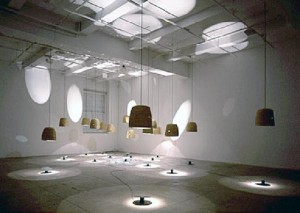The meaning of life
The meaning of life raises many different questions:
What is life ?
Life is said to be a self-sustaining, self-organizing, reproducing process interacting with its environment.
Where does it come from ?
It is common to say that life is a Creator’s design. However, Scientists offer various explanations. None are really complete and satisfactory but I often hear that “When all conditions are reunited (temperature, elements etc), life emerges spontaneously” thus without the intervention of a Creator. Life, supposedly comes from a biomolecular asymmetry (broken symmetry) which has generated homochirality. Some Scientists are referring to some polarized photons which have reached the earth (accidentally or spontaneously?) coming from the vast universe; nobody knows for sure. Will science ever be able to answer this question or will it merely roll it back to the last Unknown?
Where is life going to ?
At first glance life has no purpose, no target; life is undetermined and has no privileged direction. Life has nevertheless physical directions which can be observed: When symmetries break and something new appears that is different from what was before, we describe it as evolution. What is its direction? Well it is just the opposite of “one way” Life is bursting randomly in all directions and produces infinite diversity. All the elements of this biodiversity interact producing more and more complexity. Life goes thus towards more complexity. When biodiversity goes backward life is dying.
What is the meaning of life ?
The meaning of life is a metaphysical question needing a superior referential system. God for instance. The latter being unknowable, the meaning of life becomes a highly subjective affair depending largely on one’s belief or faith. However we can look at the question differently: what is the meaning of our life? The answer is a personal and highly ethical choice.
What is the value of life ?
For many centuries life in general seemed to have had little value because it was overabundant on the earth. Individual life, on the other hand, seemed to have more value because of its unicity. The scarcity was defining its price. With the advent of industrialization, the living Nature is now on the defensive because of an over-consumption of natural resources and the pollution of our environment. Our contempt towards life in general (Think of the massive killings of the 20th century and the rapid loss of biodiversity affecting our natural habitat) has gradually changed the way we perceive the value of life.
The value of life evolves according to what we make out of it. The force ratios which were in favor of Nature for centuries are now reversed in favor of Human beings and their tools which can literally destroy our world. The value of life now depends on the value which we want to grant it. In the end it depends on our ethical and political choices.
Summary
In breaking just slightly, symmetries have driven out absolute determinism and given life a direction and a first meaning. It is a narrow, limited path, with liberties that offer us an array of choices; most of these have moral consequences since regressions are possible. A bad choice, the choice of death for example, can drive us to a temporal deterministic evolution.
Allow me to offer another reflection on the meaning of life, one among many. Rebecca Horn is a Berlin artist, and her exhibition:

“The global map of bees”
This exhibition suggests an interpretation where art becomes as much a search for truth as an æsthetical search.
Sixteen inverted baskets, suggesting hives, project a luminous beam on broken, revolving circular mirrors.
A poem is projected onto these broken mirrors: “The bees have lost their balance…” The deformed letters appear on the walls and ceiling. Were the mirrors not broken, you could read the poem upside-down, but, alas, the message is completely unintelligible because the letters are stretched in one direction or another, here compressed, there swollen and tortured. In this sort of second-degree art, what matters is not what the artist shows us, as there is little to contemplate! The power of the work lies in this hidden message which, in a flash, becomes obvious:
“In asymmetry, meaning is lost.” It is a beautiful lesson in modern ethics, expressed through art that makes that which we do not see spontaneously more obvious. Alternatively, would recovering the symmetries also mean recovering the meaning of life and recovering a certain harmony?

